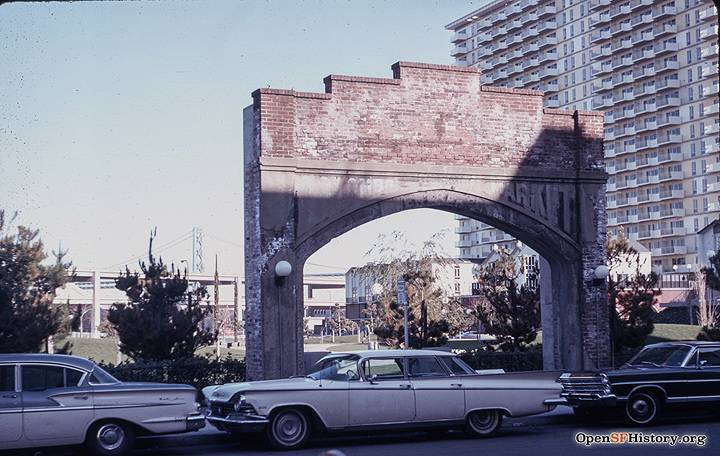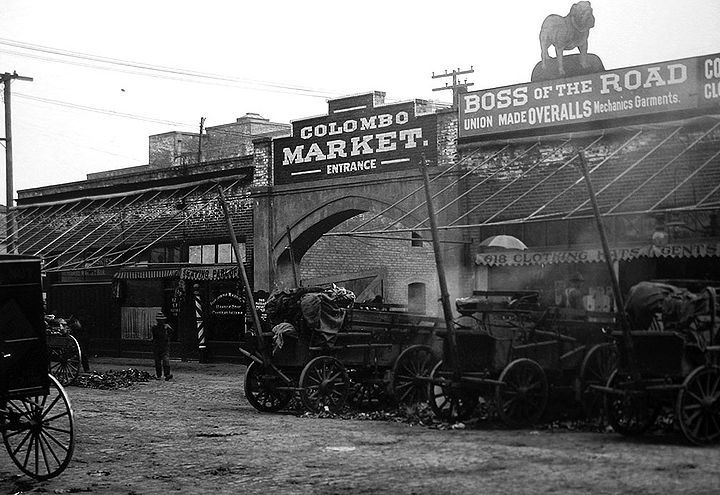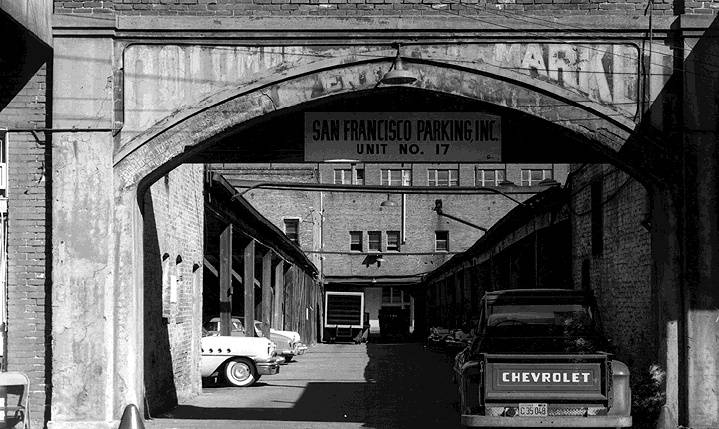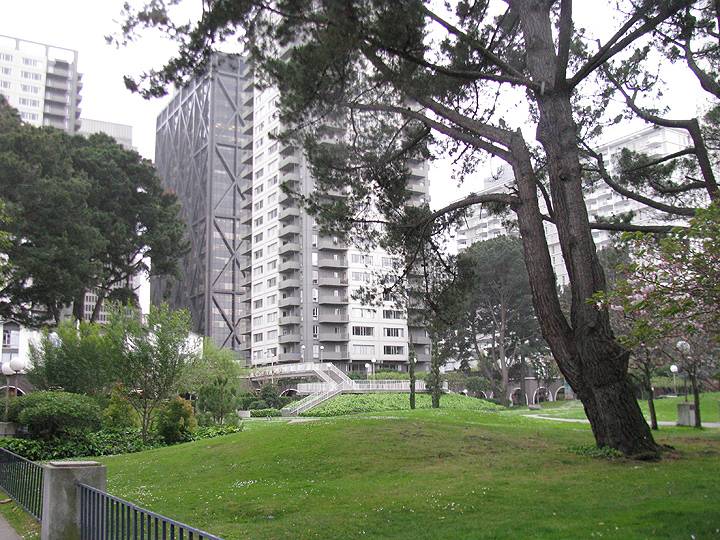Colombo Market Arch
Historical Essay
by Art Peterson
Colombo Market gate, paint still visible though everything around it is gone, March 1967.
Photo: courtesy OpenSFHistory.org
This arch at Front Street and Pacific Avenue is all that’s left of the Produce District that, until its displacement by the Golden Gateway redevelopment project in the 1960s, dominated this waterfront location. These days, at 3 o’clock in the morning, things are pretty quiet in the neighborhood. That wasn’t the case for many years after the Colombo Market took root here in 1874. Wagons loaded with bell peppers, eggplant, artichokes, rosemary, and sweet basil would be rolling in from farms in the outlying area during the early morning hours.
The growers would have left their homes about midnight traveling by horse-drawn contraptions for three hours or more from their plots on the outskirts of the city at locations such as Lake Merced and the Bayview. As the morning picked up, a dozen languages could be heard haggling over the day’s offerings. The retail markets got first shot at the produce, then the hotels and boarding houses. Finally, the ordinary homemakers, if they were patient and waited until about 10 a.m. when things shut down, could buy produce at fire sale prices.
While the activity at the market drew a rich cross section of the San Francisco population, the produce business was the private fiefdom of Genovese Italians. It was the Genovese who grew the produce, sold it at the market, and scraped up the horse droppings left behind to provide fertilizer for the farms. It’s been conjectured that the reason San Francisco Italians came to dominate the garbage business was because of the proficiency they developed cleaning up every day at the Colombo Market.
Colombo Market, c. 1920s
Photo: California Historical Society
The old Colombo Market gate, still standing today as the entry arch to the park in the picture at bottom.
The market thrived for many years. From 1860 on, vegetable growing had been the most profitable business in Northern California. After 1920, growers began shipping produce all over the United States. The growers were also affecting local palates by introducing European exotica such as oregano and thyme to local menus. But the market was a messy place, and by the 1950s too many rats per square meter were residing in what was becoming prime San Francisco real estate.
The forces of urban renewal pounced. This was the era of big government, federally funded projects. “Slum removal” was the order of the day. In the Fillmore District—the Western Addition—the Redevelopment Agency set out to “improve” the vital neighborhood by removing thousands of residents. Classic, but so-called blighted Victorian homes were bulldozed. The culturally rich Harlem of the West was demolished.
But redevelopment at the produce market was substantially different. The area was less densely populated, and the city provided the market with a new and appropriate site at the southwest end of the city. In its place was to be what the agency called “a new town in town.” The Golden Gateway was planned to combine residential, retail, commercial, and open space. Part of the open space created was Sydney Walton Park where the Colombo Market Arch still stands, having escaped the wrecking ball. Perhaps it was Sydney Walton himself, then vice chairman of the Redevelopment Agency, who made the decision to spare the arch. If so, that may be reason enough to name a little park after him.
Now known as Sidney Walton Square, named after a former official of the Redevelopment Agency, the park is a strange public/private hybrid with rent-a-cops to prevent bicyclists from relaxing in the park.
Photo: Chris Carlsson, 2011
Excerpted with permission from Art Peterson's book, "Why Is That Bridge Orange?" published in 2013, by Inquiring Minds Productions.





